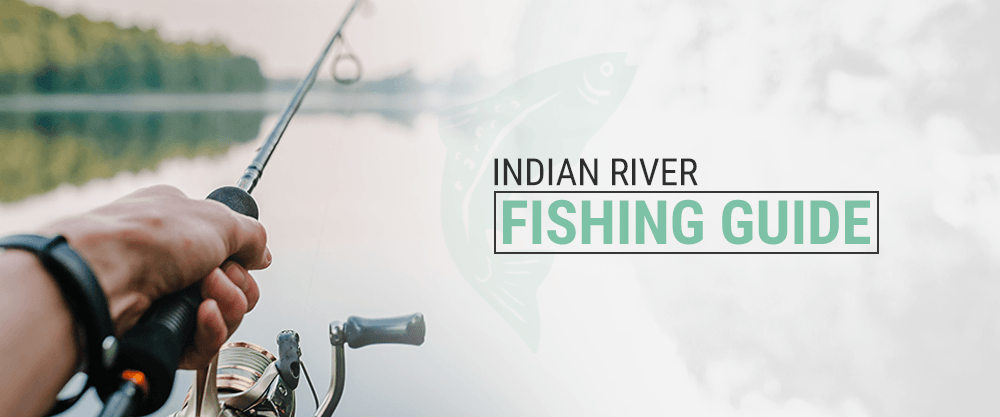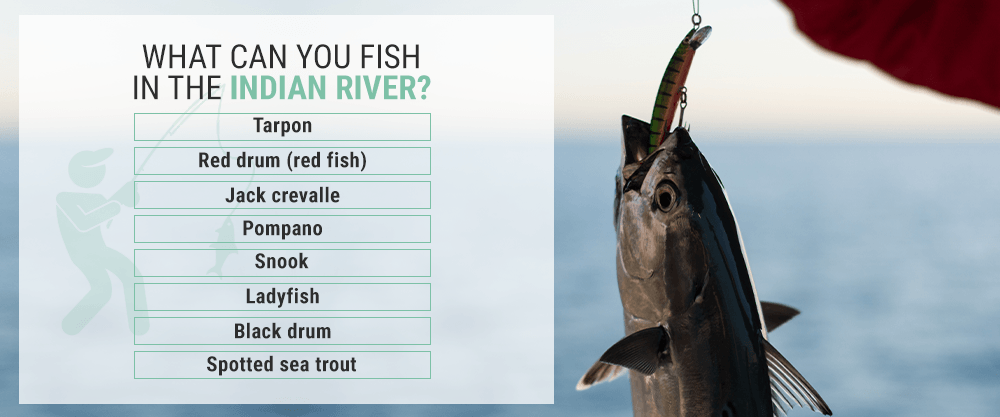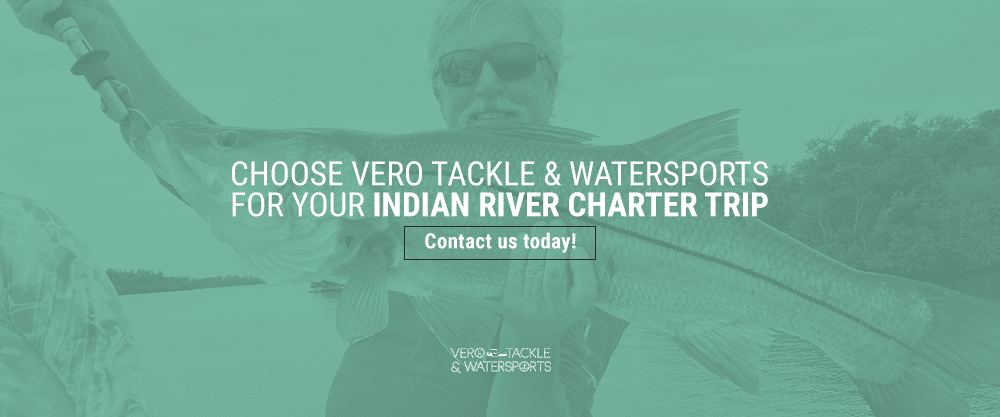
From informing you on the types of fish you’ll likely spot to recommending a few Indian River fishing tips, we’ll make sure you make the most of your Florida fishing trip.
What to Expect From Indian River Fishing
Despite being referred to as “the river” by locals, the Indian River is actually an estuary. Wedged between Florida’s coastal islands and its mainland, the Indian River contains brackish water, with saltwater flowing in from the ocean and mixing with the freshwater from the mainland. Because the estuary’s saltwater comes through inlets, the Indian is a great destination for inlet fishing.
As a narrow section of water connecting two larger bodies of water, an inlet presents the perfect opportunity for fishing. The inlet’s constriction causes the current to move faster and naturally toss bait around more to lure more fish into biting. Keep in mind that the direction of the Indian River’s current may change depending on the day and the wind direction. This is because the body of water is an estuary, not a true river.
The Indian River is suitable for both near-shore and off-shore fishing. Near-shore fishing is the more popular choice because it allows fishing fans to reel in an impressive haul while staying near the beach or inlet jetties instead of taking a long boat ride to the Gulf Stream. Journeying farther into the Atlantic Ocean for off-shore fishing may offer you a wider variety of species to fish, but you can still find plenty of bites closer to shore.
Of course, the Indian River is an excellent spot for shore fishing as well. For those who prefer to fish from the estuary’s banks, there are plenty of places to set up a rod along the sandy shore. With the right bait and tackle, you can snag an impressive bounty of trout from the shallows.
Although Indian River fishing is exceptional, there are no guarantees you’ll catch a fish on any given day. However, it is rare to not see a single fish throughout an entire day on the estuary. You’ll likely catch something — it just might not be the specific type of fish you set out to capture that day.

What Can You Fish in the Indian River?
The Indian River is teeming with a wide variety of fish to hook. As one of the most biologically diverse estuaries in all of North America, the Indian River offers a fishing experience unlike any other. Depending on where you are along the estuary, you may see a different assortment of aquatic creatures.
Here are a few of the most common Indian River fish names:
- Tarpon: Indian River tarpon fishing is a popular pastime because everyone wants a picture holding this large, ray-finned fish.
- Red drum (red fish): Often found in shallow, grassy waters, redfish find a natural habitat in the Indian River.
- Jack crevalle: Commonly called jacks, these fish will put up a fight to the very end.
- Pompano: Those lucky enough to catch a pompano will have a delicious dinner to bring home.
- Snook: Because snook prefers brackish water, the Indian River is full of them.
- Ladyfish: Ladyfish is one of the most common catches when inland fishing on the Indian River.
- Black drum: As a rather large fish, a black drum is always a photo-worthy catch.
- Spotted sea trout: The Indian River is famous for spotted sea trout fishing because the area is home to exceptionally large trout.
On a perfect day, you will catch the trifecta — a snook, redfish, and spotted sea trout. Although you won’t accomplish the trifecta on every Indian River fishing trip, it is always exciting when you do. Whether you’re hunting for the trifecta or just out to enjoy some time on the water, fishing the Indian River in Florida is always a great way to spend the day.
Tips for Fishing in the Indian River
Now that you’re familiar with the area and its native fish, here are some Indian River inlet fishing tips to help you reel in a big catch on your next trip:
- Match the hatch: If you plan on fishing with artificial lures, make sure you match what the fish are feeding on.
- Read the tides: Some fish like snook and trout wait along the estuary’s edges to attack bait once the tide pushes them toward it, so check which direction the wind is blowing the tides before casting your line.
- Stick with structures: To catch snook, fish near a structure, such as dock pilings, large rocks, and mangrove edges, as snook tend to hang out around these formations.
- Feed the fish: Redfish can hardly resist shrimp or small crab, which makes these highly effective to use as bait.
- Search for signs of life: Try to pick a fishing spot where there are signs of life — any kind of feeding activity like birds diving — as this is a good indication there’s plenty of fish around.
- Go with a pro: Book a fishing charter expedition led by an experienced, knowledgeable captain to ensure you hit all the best Indian River fishing spots without the stress of planning the trip or acquiring the proper licenses yourself.
Choose Vero Tackle & Watersports for Your Indian River Charter Trip
If you want to fish with the best, schedule a trip with a fishing charter from Vero Tackle & Watersports. We’ll provide the boat, rod and reel setup and live bait, so you can rest assured you’ll have everything you need for a successful day on the water. When you book with Vero Tackle & Watersports, you get to choose an inshore and offshore fishing adventure as well as which expert captain you’d like to embark with.
Vero Tackle & Watersports charter captains are specially trained and have spent much of their lives on the estuary, so they know all the hot spots for local fishing. Each of our captains is Coast Guard-licensed and insured and will be happy to explain the types of fish you’ll encounter along your expedition.
To find out more about how you can make the most of your time fishing on the Indian River, contact Vero Tackle & Watersports today.

